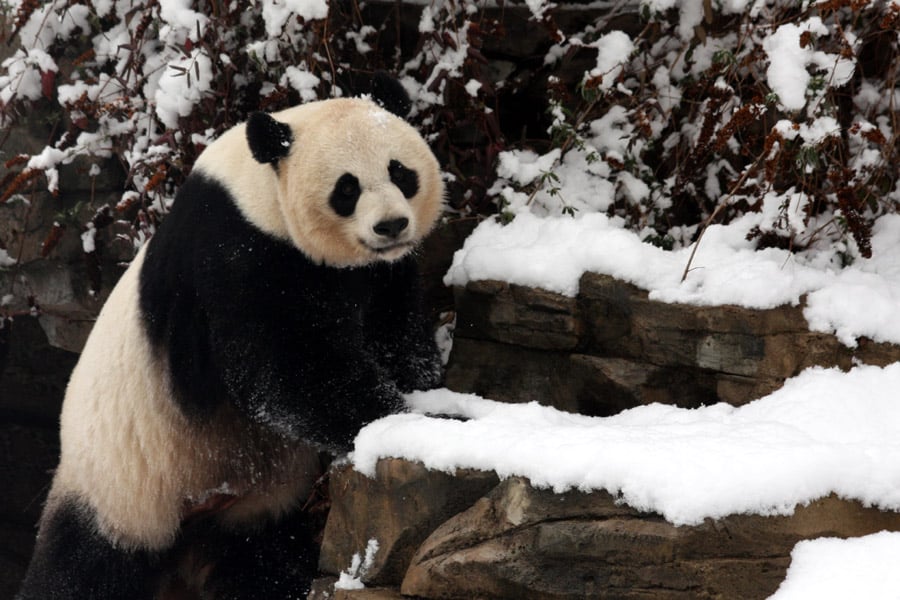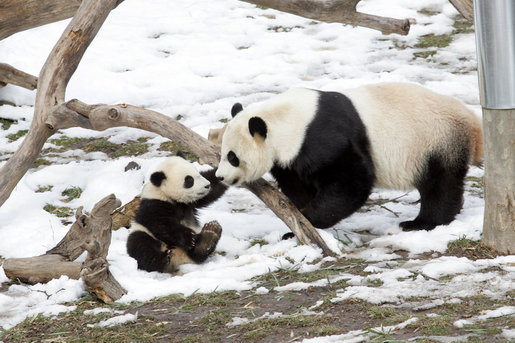
Bei Bei's 2019 departure from the Smithsonian's National Zoo, to join the giant panda breeding program in China's Wolong Nature Reserve, left a big void for fans. What made the loss of the adorable cub even more poignant was the belief that his mother, Mei Xiang, was too old to have more offspring. However, on August 21, 2020, the 22-year-old proved experts wrong by giving birth to a healthy cub.
"Giant pandas are an international symbol of endangered wildlife and hope, and with the birth of this precious cub we are thrilled to offer the world a much-needed moment of pure joy," said Steve Monfort, director of the Smithsonian's National Zoo and Conservation Biology Institute. "Because Mei Xiang is of advanced maternal age, we knew the chances of her having a cub were slim. However, we wanted to give her one more opportunity to contribute to her species' survival. I am incredibly proud of our animal care, and science teams, whose expertise in giant panda behavior was critical to this conservation success."

The zookeepers, who witnessed the "miracle" birth on the live panda camera, say Mei Xiang took to her new offspring instantly and has since been seen lovingly cradling and caring for it. The nurturing is crucial for the survival of the precious cub. Newborn pandas, which weigh just three to five pounds at birth, or about 1/900th the size of their mother, are unable to crawl or see for about two months. They, are therefore, entirely reliant on the mother's warmth, milk, and protection.
It will be several days before the cub, whose gender is still unknown, can be retrieved from the panda enclosure for a thorough neonatal exam. However, thus far, the infant, which can be heard squawking on the live camera feed, appears to be perfectly healthy.
The newborn's parents', Mei Xiang and Tian Tian, are part of the Zoo's cooperative breeding agreement with the China Wildlife Conservation Association. Similar to its siblings — Tai Shan, Bao Bao, and Bei Bei — upon turning four, the new baby panda will be sent to China to try to increase the numbers of the vulnerable species, which currently total just 1,864 specimens in the wild,
Resources: nationalzoo.si.edu, CNN.com
